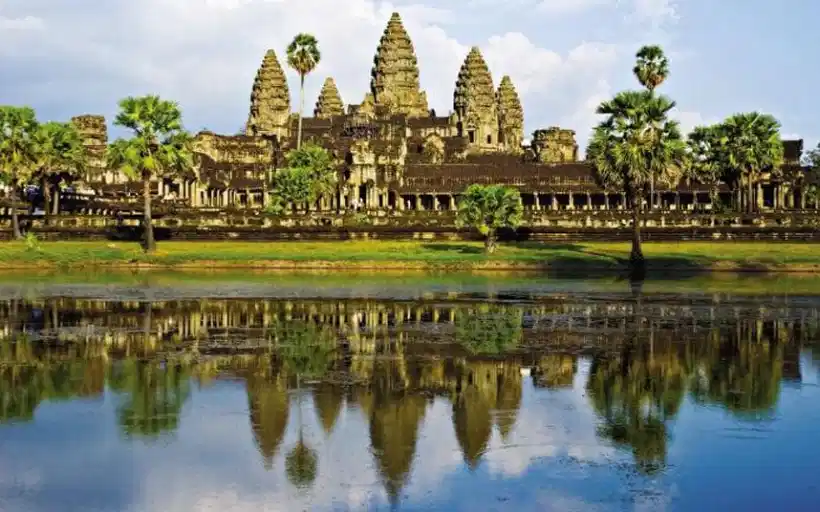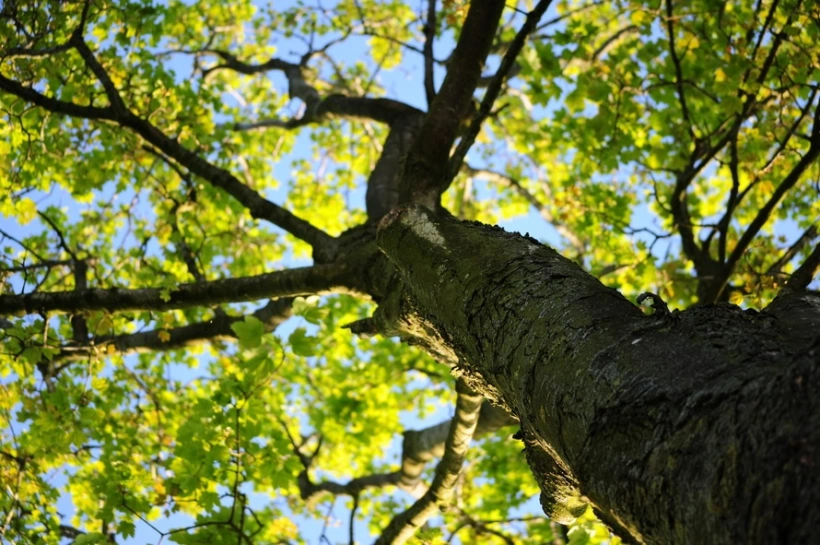
Un viaggio tra vita rurale e luoghi mistici alla scoperta del “sorriso della Cambogia”. Lontano il più possibile dal turismo di massa, un sogno ad occhi aperti alla scoperta del patrimonio inestimabile di questo Paese dal passato tragico e dal presente in fermento.
Il Paese è ormai una consolidata meta turistica e aggiornata agli standard d’accoglienza internazionali di qualsiasi livello. Le protagoniste per la maggior parte dei visitatori sono il famoso tempio e patrimonio UNESCO Angkor Wat e la zona circostante Siem Reap, la caotica e suggestiva capitale Phnom Penh e la località marittima Sihanoukville, ma al di là di queste icone turistiche, c’è tanto altro da scoprire. La Cambogia fuori stagione si rivela in tutta la sua autenticità, nel bene e nel male, per chi la sa apprezzare. Foresta pluviale e risaie a perdita d’occhio fanno da sfondo a templi millenari, piccoli villaggi fluviali abitati da instancabili contadini, il tutto incorniciato da cieli tropicali che rendono le giornate più saporite e affascinanti.
Capoluogo dell’omonima provincia, Siem Reap è situata nel nord-ovest del Paese tra le rovine di Angkor e il Lago Tonle Sap. Già negli anni ‘30, con il sontuoso Grand Hotel Angkor, la città attirava le prime ondate di viaggiatori che furono poi bloccate durante periodo buio dei Khmer Rossi. Negli ultimi anni il flusso di turisti è aumentato nuovamente e ora la città si presenta come un’accogliente base di partenza per le escursioni da fare in zona ed è dotata di ogni genere di struttura ricettiva: hotel, ostelli, spa, negozi e ristoranti. Vale la pena visitare il Museo Nazionale di Angkor, la scuola e il mercato dell’artigianato, e passeggiare tra le bancarelle del mercato serale. Per gli amanti della vita notturna, Pub Street è la via dei locali e dei ristoranti più frequentati, ma i migliori in cui si può assaporare la cucina khmer si trovano nelle vie secondarie e più nascoste della città.
Dopo un lungo viaggio in bus da Bangkok con tappa alla memorabile dogana di Poipet, Siem Reap accoglie con una festa di clacson e voci. “Hi! My name is Rà, nice to meet you!”, dice con aria lieta il ragazzotto tarchiato sulla trentina. Ha un viso simpatico e un sorriso abbagliante e la sua passione sono i percorsi meno battuti. Pacifico e amichevole, Rà è la guida perfetta alla scoperta di Angkor, il parco archeologico più grande ed eccezionale del Paese costituito da un Grande Circuito di 26km che comprende, oltre ai più celebri, la Città del Tempio Angkor Wat, Ta Phrom, Angkor Thom e Bayon, il tempio buddhista-hindu Phreh Khan e il sontuoso Neak Poan.
Nome originale di Angkor era Yasodharapura, ovvero città di gloria, costruita all’inizio del nono secolo per celebrare la ricchezza dell’Impero Khmer e dell’imperatore Yasovaraman I. Appena qualche secolo dopo, al momento del suo apogeo, sotto la guida dell’Imperatore Javaraman VII, era la città più grande del mondo e copriva un’area di mille chilometri quadrati. Visitarli oggi, dopo che la storia e la natura li hanno coperti e trasformati, è un’esperienza mistica. Un sogno a occhi aperti che proietta in un’era lontana. Passeggiando in una nuvola di vapore condensato, ci si addentra nella foresta accompagnati dalle voci della natura e dalla delicata cantilena di Rà che introduce la storia dell’Impero Khmer. Una teoria di regnanti dai nomi impronunciabili, guerre lontane e successioni di civiltà antiche portano in un passato fatto di prosperità economica e magnificenza architettonica, ottimi raccolti, feste popolari e celebrazioni buddiste. Lungo il tragitto a piedi compaiono templi e rovine antiche che si fanno largo tra rami e foglie della foresta tropicale. Enormi complessi religiosi e torri maestose sembrano nascere spontaneamente dalla natura.
Altra perla della zona di Angkor è Kbal Spean, un’alveo fluviale interamente scolpito e immerso nella profonda giungla del Phnom Kulen National Park a 50 km da Siem Reap. La fauna è molto ricca e rende l’avventura ancora più selvaggia, mentre l’umidità al 99% copre i colori di una luce bianca come in un sogno. Destreggiandosi tra liane e formazioni rocciose simili a meteoriti, si arriva al “Fiume dei mille Linga”, sul cui affascinante letto abili mani hanno scolpito centinaia di immagini di divinità Hindu, rendendolo un capolavoro indimenticabile. Così bello che un gruppo di placide farfalle variopinte ci si posano sopra, scatenando giochi di colore e pensieri magici. Seguendo il letto del fiume per tornare verso valle si incontrano grotte decorate con antiche incisioni e piccoli laghetti e cascate, dove ci si può rinfrescare e nuotare per concludere l’escursione.
Il modo più autentico per scoprire il meglio del territorio è nutrirsi dei consigli di chi si incontra lungo il percorso, per poi seguirli. Dopo aver ascoltato storie, leggende e informazioni pratiche, decidiamo di lasciarci consigliare dal nostro amico Rà:“Go visit floating village and then all the way to north-east… the heart of Cambodia!”. Così si prosegue verso uno dei luoghi più caratteristici e bizzarri mai visti: il villaggio galleggiante di Kompong Pluk, in cui vive una delle comunità fluviali più remote. Palafitte alte fino a sei metri sorreggono le abitazioni caratteristiche cambogiane. Costruite in previsione d’inondazioni durante la stagione delle piogge, queste architetture danno al paesaggio un alone surreale. L’alternativa per chi vive qui è trascorrere giorni e notti in una sorta di house boat seguendo il flusso vitale del fiume e del vicino lago Tonlè Sap. Nella maggior parte dei casi la barca è anche il luogo di lavoro: vendita del pescato locale, ortaggi e frutta o piccoli ristoranti casalinghi dove si assaporano le ricette locali preparate con i prodotti della comunità. Il mezzo di trasporto più efficace da queste parti è una bellissima pagoda in legno decorata con colori sgargianti, con la quale muoversi per il villaggio che si estende anche dentro una foresta di mangrovie. Scaldati dai sorrisi della gente e dai saluti di bambini incuriositi, si ringrazia la sorte di essere capitati in questo posto speciale, prima di proseguire attraverso il lago Tonlè Sap fino alla cittadina di Battambang. Si tocca poi la città di Kampong Cham, sul grande fiume Mekong, fino all’estremo nord-est del paese, sulle orme della Cambogia più autentica.
Gli ultimi giorni sulla costa, nel sud-est del Paese, segnano la fine di un mese tra luoghi apprezzati da turisti di tutto il mondo, natura incontaminata e preziosi patrimoni artistici e architettonici. Ma il vero tesoro della Cambogia è la sua gente: il popolo Khmer è stato all’inferno, ha subito massacri, miseria e instabilità politica per anni, ma ottimismo e tenacia sono riusciti a mantenere vivo quel sorriso irresistibilmente contagioso.
Articolo pubblicato su Latitudeslife.com con le foto del mio amico Andrea Zanaboni



 Doing for good is something that I’ve always appreciated, but I didn’t realize it until I started volunteering. You have to start somewhere, and I did in Australia, nearly one month after I landed on this country. It was a nice way to meet new people and support a cause and add an experience to my journey Down Under. But shortly it became more. Right after the first day as a volunteer waitress at
Doing for good is something that I’ve always appreciated, but I didn’t realize it until I started volunteering. You have to start somewhere, and I did in Australia, nearly one month after I landed on this country. It was a nice way to meet new people and support a cause and add an experience to my journey Down Under. But shortly it became more. Right after the first day as a volunteer waitress at